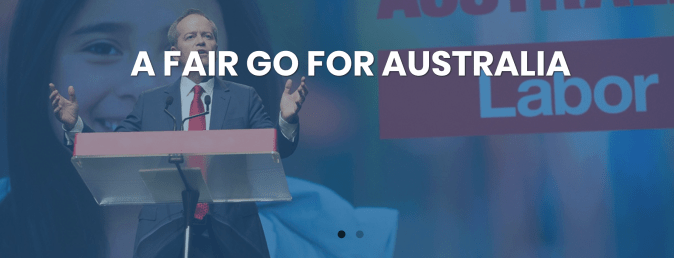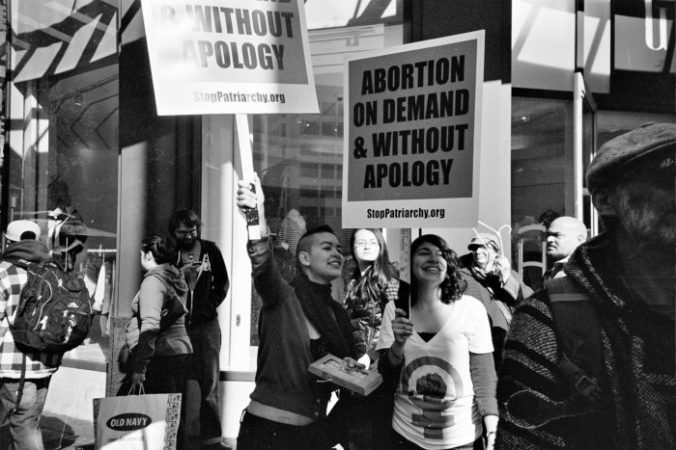“In you they have treated father and mother with contempt” (Ezekiel 22:7a)
“How the precious children of Zion, once worth their weight in gold, are now considered as pots of clay, the work of a potter’s hands!” (Lamentations 4:2)
Like many people watching from Australia, it has been distressing to see footage of children being separated from their parents along the United States’s border with Mexico. The Trump administration’s ploy to discourage undocumented migration is cruel and immoral. The policy may have been put in place by an earlier administration, but President Trump has made it clear that he is using these children to discourage illegal migration into the United States.
Russell Moore (President, Ethics & Religious Liberty Commission of the Southern Baptist Convention) is one of many signing a public letter to the Government, saying, “The traumatic effects of this separation on these young children, which could be devastating and long-lasting, are of utmost concern.”
While we in Australia look on with disgust at this violation of the family unit, the Australian Labor Party (ALP) have announced their national platform, which includes a policy to remove children from a new wave of ‘disgraced’ parents.

According to policy initiatives that are to be presented and adopted at this year’s ALP national conference, parents who don’t support their child’s wish to transition to another gender, are guilty of abusing their children and therefore will subject to a new range of laws.
“LGBTI Conversion Therapy
Labor accepts the scientific evidence that claims by those purporting to change people’s sexual orientation or gender identity are both false and harmful and does not accept that such claims should continue to be made or, worse, be acted upon. Those who make these claims prey upon those vulnerable to the anti-LGBTI prejudices of the circles in which they or their families move.
Current laws regulating false and misleading conduct in trade or commerce, or professional misconduct in the health professions, are inadequate to deal with perpetrators who can evade health regulation by not being registered, and evade consumer protection laws by claiming to be conducting religious activities.
Labor will:
- Ensure, in cooperation with the States and Territories, that adequate laws and systems are put in place to ensure the protection of children, adolescents and others from the false claims and psychological harms of so-called “ex-gay” therapies
- Ensure that child protection authorities acknowledge attempts to “cure” Same-Sex Attracted or Gender Questioning children and young people as serious psychological abuse; and
- Acknowledge these harms, when suffered within the family, as domestic violence against the child.”
“Labor opposes the practice of so-called conversion and reparative therapies on LGBTIQ+ people and seek to criminalise these practices.”
(ALP 48th National Conference (Consultation Draft 2018), chapter 8, p.205)
Child abuse is a very real and very terrible evil in our society. It is incumbent upon us to guard our children against such ignominious harm. But what are the facts here? Is this domestic violence?
In 2016, Prof Patrick Parkinson published an important evaluation of the Safe Schools program. In this research paper Prof Parkinson noted that contrary to Safe Schools, which claims that 4% of the population is transgender, research suggests that the real number is about 0.35%. This number encompasses a broad definition of transgenderism, based on surveys rather than proper diagnosis by medical professionals. Prof Parkinson then cites The American Psychiatric Association which estimates the rates of gender identity disorder for natal adult males to be at 0.005% to 0.014%, and for natal females, from 0.002% to 0.003%.
The numbers of children who identify as gay or lesbian is significantly higher, but percentage remains relatively small, somewhere between 2-4% of the population. It needs to be said that because these numbers of small, doesn’t diminish the importance of these kids, and of their need for love and support; no child is insignificant.
In the most recent edition of The Atlantic, Jesse Singal has written a thorough piece, exploring the complexities of treating children with gender dysphoria, cautioning against preempting treatments,
“the World Professional Association for Transgender Health…states that while some teenagers should go on hormones, that decision should be made with deliberation: “Before any physical interventions are considered for adolescents, extensive exploration of psychological, family, and social issues should be undertaken.” The American Psychological Association’s guidelines sound a similar note, explaining the benefits of hormones but also noting that “adolescents can become intensely focused on their immediate desires.” It goes on: “This intense focus on immediate needs may create challenges in assuring that adolescents are cognitively and emotionally able to make life-altering decisions…But some clinicians are moving toward a faster process. And other resources, including those produced by major LGBTQ organizations, place the emphasis on acceptance rather than inquiry. The Human Rights Campaign’s “Transgender Children & Youth: Understanding the Basics” web page, for example, encourages parents to seek the guidance of a gender specialist. It also asserts that “being transgender is not a phase, and trying to dismiss it as such can be harmful during a time when your child most needs support and validation.”
“Ignoring the diversity of these experiences and focusing only on those who were effectively “born in the wrong body” could cause harm. That is the argument of a small but vocal group of men and women who have transitioned, only to return to their assigned sex.”
Prof Patrick Parkinson makes the important point,
“One reason for great caution about what we teach children is that gender dysphoria may be transitory.”
There is a growing volume of research that is exploring the relationship between age and gender dysphoria. Depending on the study, evidence shows that somewhere between 80-98% of children will no longer experience gender dysphoria after puberty. That is a staggering indictment on the claims being made by the ALP. Even if we ignore the data from the highest end of the spectrum and only accept the most conservative percentile (80%), this still indicates that the overwhelming majority of children will return to identifying with their biological sex by the time they reach adulthood. For argument sake, let’s manipulate the data even further and assume that the conservative 80% is an exaggeration and that the real number of children recovering from gender dysphoria is half that number; that is still 4 out of every 10 children who have gender dysphoria. But according to the ALP, producing such evidence is simply to “prey upon those vulnerable to the anti-LGBTI prejudices of the circles in which they or their families move.”
While the ALP’s National Platform refers to “accepting the scientific evidence”, they cite zero studies, and they fail to account for many academic articles that have been published in recent years which either contradict or at the very least, nuance the position which the ALP is claiming as Gospel fact.
Some LGBTIQ Australians will experience a change of orientation and of gender identity, especially in the case of children with gender dysphoria who later come to affirm their biological sex. This is a simple statement of fact, not an affirmation for certain gay conversion therapies that have been reported in the media in recent months. Because I am a Christian, I do not support gay conversion therapy, as defined in terms of using pseudo-scientific and unbiblical methods to change a person’s sexuality. There is, however, a massive difference between offering shock therapy or performing a supposed exorcism, and reading the Bible with someone and them concluding that they no longer wish to identify as same-sex attracted or transgender. It is disturbing to see the ALP platform insist upon a zero-sum game, whereby everyone who doesn’t fully subscribe to the new gender agenda, is called names and will be accused of abuse.
What of the child or adult who no longer wishes to identify as LGBTIQ? What if an individual, while having LGBTIQ affections, does not wish to be identified as such? What of men and women who have undergone sex change surgery and have since detransitioned? The point is obvious and yet the ALP policy has no room to accept the reality that there are LGBTIQ people who do change and cease to identify as transgender, gay or lesbian.
The ALP platform is more troubling, for they are moving to criminalise therapies/ministries that fail to affirm people in their self-assigned gender and sexuality, and they are moving to accuse parents of domestic violence for not supporting children into transition.
How dare an Australian political party throw around the language of abuse and threaten to taken children from their parents; it is immoral and unspeakable, and it insults victims of real child abuse.
It is a sad irony, that on the one hand, voices calling for a ban on LGBTIQ conversion therapies, are at the same time, promoting sex changes for children. So, children are free to change one way, but not another?
At best, the ALP’s position on LBGTIQ issues is an attempt to show compassion toward vulnerable children, but it is a platform built on unstable and dangerous ideology.
As a parent, I know that not everything a child feels and wants is in their best interest, and chances are, they will change their mind by next week. Parents can discern the difference between a child’s fad and a deeper issue and. Parents love their children and want to see them safe and healthy and flourishing in life. This is not about bullying people into gender stereotypes or funneling children into strange and potentially harmful practices. This isn’t about parents patiently and lovingly caring for children who are struggling with their sexual identity; the ALP platform is about conformity to a new pattern for sexuality, and about using the weight of the law to force religious groups and parents to sign up to the sexual revolution.
I understand that some people may read this as an anti-ALP and perhaps pro-conservative article; that is not my agenda. As a Christian minister, I am not defined by such socio-political parameters. My concern is for children and for parents, who will face the onslaught of this irrational and dangerous ideologue, should the ALP platform gain traction. I am also concerned by these political attempts to place traditional Christian teaching on the wrong side of the law.
Churches need to appreciate that without due consideration and careful definition, the ALP’s platform can be used to constrain Christian teaching on sexuality, from the pulpit through to pastoral counselling.
Parents need to appreciate the gravity of the situation being outlined. For example, say a son comes home from school and announces that he feels like his true identity is as a girl. If the child returns to school and mentions to his teacher that mum and dad are not convinced and are reluctant to buy him dresses, the school may be obliged to report a case of child abuse.
I urge members of the Australian Labor Party to speak up and to vote against these dangerous and unnecessary measures. I also encourage members of the public to contact their local State and Federal Labor members and to share your concerns with them.


